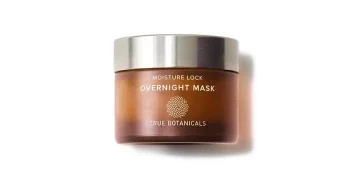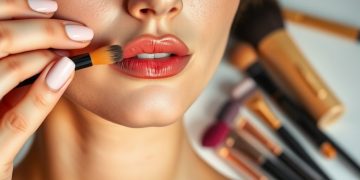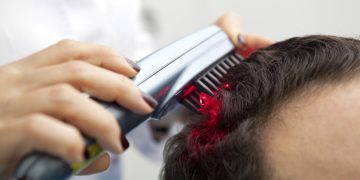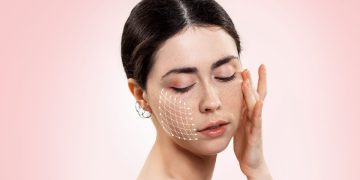In recent years, the men’s skincare market has experienced a remarkable surge. No longer confined to basic shaving creams and aftershaves, men today are exploring products designed for hydration, anti-aging, and oil control. Yet, despite the booming industry, there remains a pervasive misconception that skincare must be complicated to be effective. In reality, simplicity paired with scientifically-backed formulations can deliver noticeable improvements without overwhelming the user. This article explores the fundamentals of male skincare, the role of shaving synergy, lightweight routines, and practical strategies for integrating science into daily habits.
1. The Rise of Male Skincare
Historically, skincare was largely marketed to women, with men often relegated to basic hygiene products. However, shifting cultural norms, increased awareness of sun damage, and the rise of male grooming influencers have expanded the market. According to industry reports, the global men’s skincare market is projected to continue growing at double-digit rates, driven by interest in anti-aging, hydration, and multi-purpose products.
Key factors behind this rise include:
- Social Acceptance: Grooming and skincare are no longer stigmatized; self-care is viewed as an essential part of wellness.
- Media Representation: Male celebrities and athletes openly discussing skincare normalize its practice.
- Scientific Validation: Advances in dermatology have produced lightweight, effective formulations tailored to male skin physiology.
Understanding these trends sets the stage for practical, science-driven routines.
2. Male Skin Physiology: Why Science Matters
Men’s skin differs from women’s in several critical ways, influencing product selection and routine design:
- Thickness and Density: Male skin is generally 20–25% thicker, especially in the dermis, due to higher collagen content.
- Sebum Production: Androgen-driven oil production is higher, increasing the risk of acne, clogged pores, and shine.
- Shaving Impact: Regular shaving exfoliates the skin, but also heightens sensitivity and irritation risk.
By tailoring products to these physiological factors, men can achieve optimal outcomes with fewer, targeted items.

3. Oil Control Without Overdrying
Excess sebum is a common concern among men, yet harsh, stripping cleansers can damage the skin barrier. Effective oil control relies on:
- Gentle Cleansing: Formulas with salicylic acid or mild surfactants remove impurities without disrupting moisture.
- Non-Comedogenic Moisturizers: Lightweight lotions or gels hydrate without exacerbating oiliness.
- Targeted Treatments: Niacinamide and zinc formulations regulate sebum production and reduce pore appearance.
Science-driven ingredients allow men to manage shine while preserving skin integrity.
4. Shaving Synergy: From Irritation to Enhancement
Shaving, a daily ritual for many men, can be both beneficial and damaging. Integrating skincare into this step can improve results:
- Pre-Shave Preparation: Gentle exfoliation removes dead skin, reducing ingrown hairs and razor bumps.
- Lubricating Shave Products: Creams, oils, or foams with humectants and antioxidants minimize friction.
- Post-Shave Care: Alcohol-free balms with soothing agents like allantoin or aloe vera reduce irritation and support barrier recovery.
A shaving-focused approach transforms a potentially harsh routine into a scientifically-enhanced skin maintenance step.
5. Lightweight Routines for Maximum Impact
Men often prefer minimalistic routines. Science supports that a few well-chosen products can suffice:
- Morning: Gentle cleanser, lightweight moisturizer with SPF.
- Evening: Cleanser, serum or moisturizer targeting specific concerns (acne, anti-aging, hydration).
- Optional Treatments: Weekly exfoliation or masks to manage oil, clogged pores, and texture.
Lightweight, multifunctional products streamline routines while providing evidence-based benefits.
6. Targeting Specific Concerns
Different skin types and ages require tailored interventions:
- Acne-Prone Skin: Salicylic acid cleansers, niacinamide moisturizers, and oil-absorbing primers.
- Aging Skin: Retinol-based serums, peptides, and antioxidant-rich moisturizers combat fine lines and oxidative stress.
- Sensitive Skin: Fragrance-free, barrier-supporting formulations reduce irritation and maintain resilience.
Personalized, research-backed choices enhance adherence and results.
7. The Role of Technology and Innovation
Recent innovations make men’s skincare even more accessible and effective:
- AI Skin Analysis: Apps and smart devices recommend routines based on individual skin profiles.
- Ingredient Delivery Systems: Liposomal or nano-encapsulated actives improve penetration and efficacy.
- Eco-Friendly Formulations: Water-light gels, biodegradable packaging, and low-waste refills align with sustainability goals.
Technology enables science-driven simplicity, making advanced care achievable for all men.
8. Building Habits That Last
Even the most effective products are only as good as the habits that support them. Strategies include:
- Routine Integration: Pair skincare steps with existing habits like morning shower or post-shave.
- Consistency Over Complexity: Focus on regular application of a few key products rather than elaborate, multi-step regimens.
- Education: Understanding why each product works fosters commitment and prevents misuse.
Sustainable habits ensure long-term skin health and visible improvements.
9. Ethical and Psychological Dimensions
Modern men’s skincare intersects with self-image, mental health, and societal expectations:
- Confidence Boost: Healthy skin supports self-esteem and professional appearance.
- Ethical Consumption: Choosing cruelty-free, sustainable products aligns with broader lifestyle values.
- Breaking Stereotypes: Normalizing skincare among men challenges outdated notions of masculinity.
Science-driven simplicity empowers men to care for themselves without stigma or confusion.
10. Conclusion: Simplicity Meets Science
Men’s skincare is evolving beyond shaving creams into a realm of evidence-based, efficient routines. By understanding skin physiology, leveraging lightweight formulations, integrating shaving synergy, and embracing technological innovations, men can achieve healthier, more resilient skin. The future lies in minimal, personalized, and scientifically-informed practices—proving that simplicity and science together can transform skincare into an effortless yet powerful tool.













































